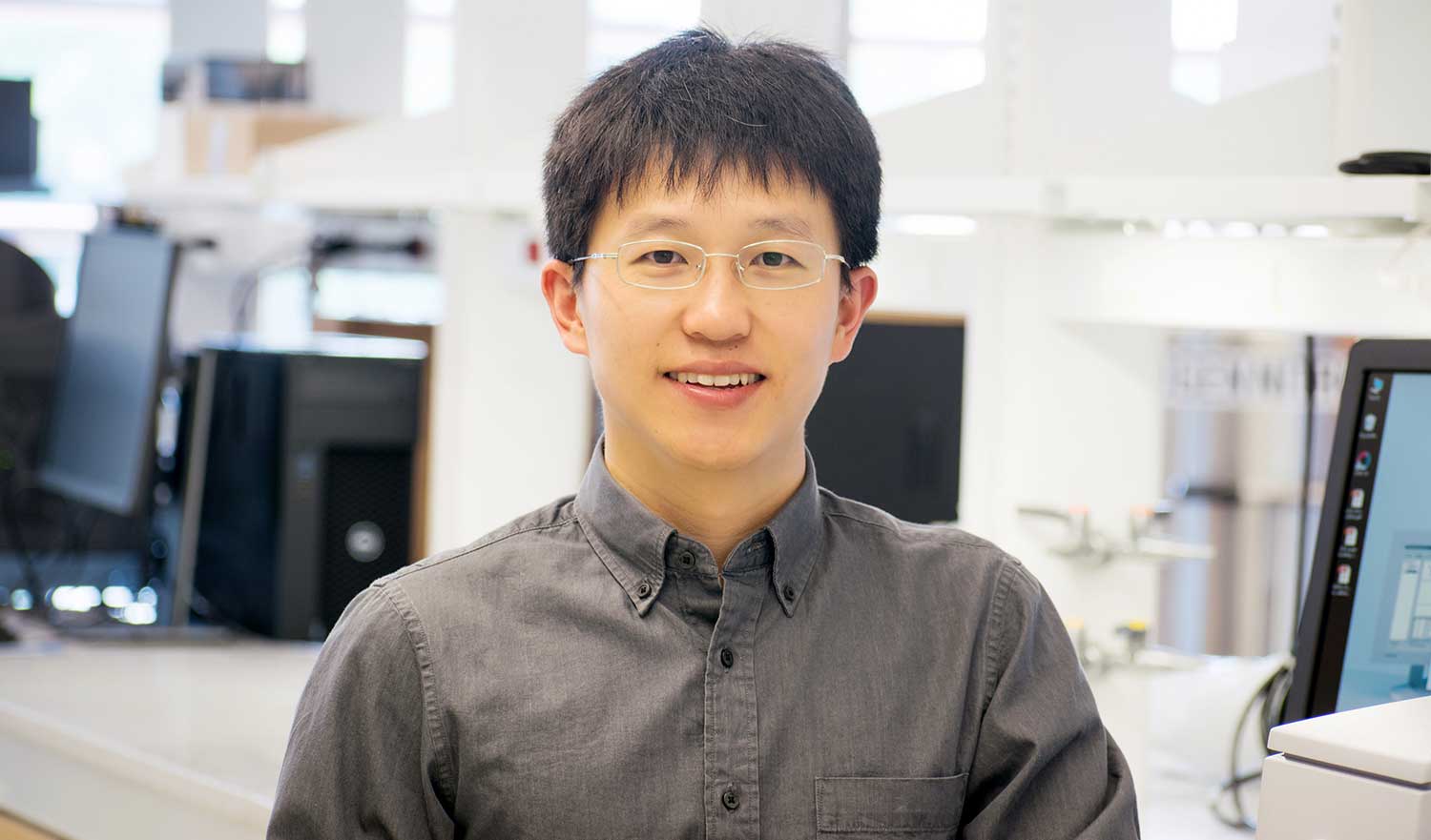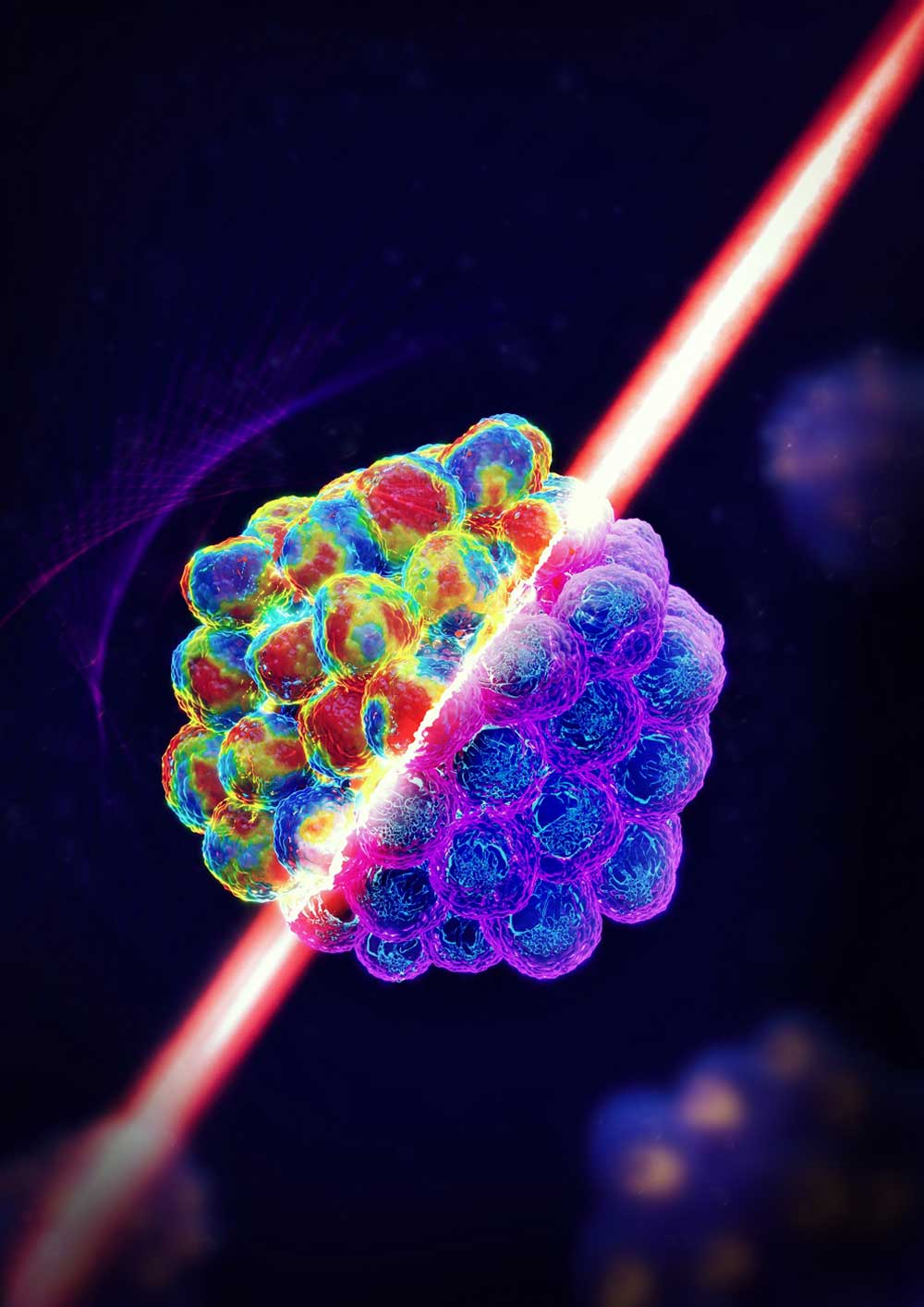Zhang receives NSF CAREER award to advance Brillouin microscopy for cancer research

Disease progression, such as cancer metastasis, is often associated with changes in cell and tissue stiffness. Tumors are typically harder than surrounding health tissues, creating a different microenvironment for cancer cells within. While it is critical to understand how the biomechanical change of microenvironments affects metastatic growth, most conventional methods of measuring mechanical properties are contact dependent and invasive, which presents many challenges.
Research from Jitao Zhang, assistant professor of biomedical engineering (BME) at Wayne State University and a scientific member of the Karmanos Cancer Institute’s Molecular Imaging Program, will further a novel non-contact mechanical imaging technique for which he holds three patents and is considered one of the world’s foremost experts. His project, “Photoacoustic-Brillouin microscopy for multimodal mechanical imaging of tumor growth,” merited a five-year, $502,132 National Science Foundation Faculty Early Career Development (CAREER) award, the organization’s most prestigious accolade for up-and-coming researchers.
A Brillouin microscope uses a laser beam to probe the cells’ mechanical properties, allowing measurement to be conducted when cells are in their physiological conditions. Since physical contact is not needed, Brillouin microscopy is far less invasive and more convenient than other methods.
This project takes the process a step further, as a technology named photoacoustic-Brillouin microscopy (PABM) aims to present an absolute measurement of mechanical change than was previously unattainable, enabling a more comprehensive understanding of tumor growth properties as well as benchmarking and comparison across studies.
“PABM addresses a significant gap in current cancer research methodologies,” said Zhang. “The new data and insights gained from this technology hold unique potential to advance a wide range of research in both biophotonics and cancer diseases.”
Zhang’s work to innovate this optical Brillouin technology, which can answer many important questions in biophysics and mechanobiology, was featured in The Guardian after being named by peers in the scientific community as one of the 10 biggest science stories of 2022. An article written by Zhang and his international colleagues was recently published in Nature Reviews Methods Primers to overview the latest advancements in this technology.

"Dr. Zhang is an outstanding junior faculty member,” said Cynthia Bir, professor and chair of BME at Wayne State. “We are so fortunate to have someone with his dedication conducting cutting-edge research in the Department of Biomedical Engineering."
Brillouin microscopy is an optical imaging modality rooted in what is known as Brillouin light scattering (BLS), first predicted in 1922 by French physicist Léon Brillouin. BLS occurs when light interacts with a substance and thermal fluctuations or vibrations of molecules in the material cause the light to scatter. Vibrations can be affected by certain factors, including heat, compression, water content or material stiffness. It is the latter of these characteristics that is most valuable for the application of Brillouin microscopy as a diagnostic tool.
NSF CAREER awards emphasize the integration of research and education to build a firm foundation of leadership. In addition to bolstering the BME curriculum related to biophotonics, Zhang intends to develop other educational modules, including a summer course on Brillouin technology for graduate students and post-docs.
Zhang joined the Wayne State faculty in 2021 after spending six years in the Fischell Department of Bioengineering at the University of Maryland. He earned a B.S. in optical information science and technology from Wuhan University and received his Ph.D. in optical engineering from Tsinghua University in 2010. Zhang has authored more than 40 peer-reviewed articles and edited two book chapters. His research is funded and supported by such agencies as the National Institutes of Health, the National Science Foundation and the American Cancer Society.
The grant number for this NSF award is 2339278.